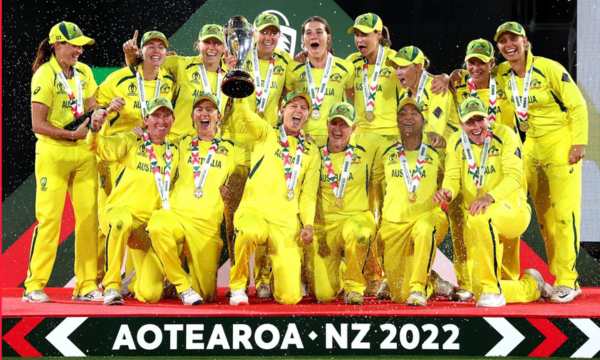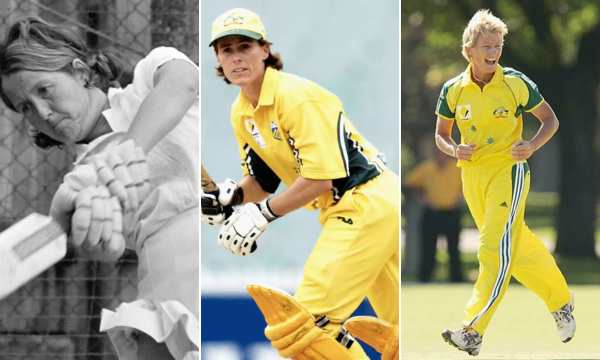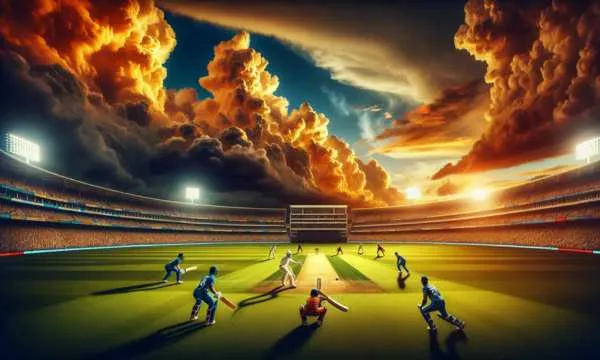Women’s Cricket: Tournaments, Players, and Successful Teams
Women’s cricket has transformed into a global phenomenon, captivating millions of fans with its thrilling matches.
Ad
Did you know that the viewership of women’s cricket broadcasts has increased by over 300% in the last decade?
This sports revolution has redefined standards, broken records, and inspired new generations of athletes.
In the following article, we will delve into the world of women’s cricket – from spectacular tournaments to legendary players who are changing the global sports landscape with their stories of resilience and excellence.
Explore the World of Women’s Cricket
This sport, played in over 25 countries with official competitions, combines strategy, technical skill, and physical endurance.
The format of women’s cricket follows the same basic rules as men’s, with matches in T20, ODI, and Test formats.
England hosted the first official women’s international match in 1934, but it was only in recent decades that the sport gained global recognition. Important milestones in the evolution of this women’s sport:
- 1973: First Women’s World Cup (two years before the men’s);
- 2005: Merger of the International Women’s Cricket Council with the ICC;
- 2014: Complete professionalization in England;
- 2020: T20 World Cup with a record audience of 86,174 spectators;
- 2022: Inclusion in the Commonwealth Games;
The explosion of media coverage has changed public perception, increasing the commercial value of the sport.
Live broadcasts of major women’s competitions now reach over 180 countries, boosting grassroots growth with more girls starting the sport each year.
ICC Women’s ODI and T20 World Cups
The ICC Women’s ODI Cricket World Cup, held since 1973, represents the pinnacle of 50-over format competition.
This tournament, held every four years, brings together the best teams in the world for about a month of intense competition.
Australia has historically dominated the competition with seven titles, followed by England with four wins. New Zealand, known as the White Ferns, won the trophy in 2000.
The ICC Women’s T20 World Cup, started in 2009, brought a faster and more powerful version of the sport. With matches lasting about three hours, this dynamic format attracted new audiences.
The 2020 edition in Australia marked a historic moment with the final at the Melbourne Cricket Ground setting a new attendance record for a women’s sports event.
Notable aspects of the Women’s World Cups:
- Expansion from 8 to 10 participating teams in the ODI World Cup.
- Prize money increased by 700% in the last decade.
- Global broadcast to over 180 countries.
- Introduction of DRS (Decision Review System) in all matches.
- Infrastructure parity with men’s competitions.
Qualification for these competitions has become extremely competitive, with emerging teams like Thailand and Bangladesh challenging traditional powerhouses.

Australia-womens-team-(Source-Google)
WPL, WBBL & The Hundred: The Leagues Dominating the Game
The Women’s Premier League (WPL) revolutionized women’s cricket with its spectacular launch in 2023.
This Indian league generated unprecedented contracts, with players like Smriti Mandhana receiving over USD 400,000 per season.
The five WPL teams represent a new era of professionalism in cricket, attracting the best players in the world. The league has been crucial in developing local Indian talent.
The Australian Women’s Big Bash League (WBBL), pioneering since 2015, established the model for professional women’s cricket leagues.
With eight franchises aligned with men’s teams, the WBBL offers unparalleled visibility with over 40 televised games per season.
Sydney Sixers and Brisbane Heat have historically dominated the competition with multiple titles. The Hundred, in England, innovated with its unique 100-ball format.
Distinctive characteristics of these major leagues
| League Characteristics | WPL | WBBL | The Hundred |
| Countries of Players | 14 | 11 | 9 |
| Maximum Salary | $410,000 | $74,000 | $35,000 |
| Duration | 3 weeks | 6 weeks | 4 weeks |
| Average Audience | 25 million | 15 million | 8 million |
These leagues have completely transformed the sport’s economy, creating viable careers for hundreds of athletes and significantly raising the game’s technical level.
Who Shines in Women’s Cricket Today?
Contemporary women’s cricket is dominated by super athletes whose technique and physical power are redefining the sport’s boundaries.
Meg Lanning of Australia stands out as the most successful captain in history, leading her country to multiple world titles.
Her compatriot Ellyse Perry revolutionized the concept of an all-rounder, excelling in both batting and bowling with extraordinary statistics in all formats.
In the Indian subcontinent, Smriti Mandhana has become the face of women’s cricket with her elegant batting style as an opening batswoman. Harmanpreet Kaur, known for her fiery innings, has transformed the potential of middle-order batting.
New Zealander Sophie Devine has set striking rate records in T20s, including some of the longest sixes ever recorded in the sport.
The athletic level in current cricket is historically unmatched, with bowling speeds regularly exceeding 120 km/h and increasingly powerful and innovative batting tactics.
The Great Teams in the Current Landscape
The Australian women’s cricket team has established an unprecedented dynasty, dominating all formats with a perfect combination of depth, talent, and development systems.
Their incredible record includes three consecutive T20 World Cups and a streak of 26 ODI wins. Substantial investment from Cricket Australia has created an environment where players can fully dedicate themselves to the sport.
England remains a consistent winner, supported by the oldest professional system. India has emerged as a global powerhouse, fueled by massive public interest following their performance in the 2017 World Cup final.
New Zealand maintains its tradition of superior performance with limited resources. Ranking and strengths of the top teams:
- Australia: Unmatched development system and squad depth.
- England: Established professional structure and excellent talent program.
- India: Massive fan base and recent investment through the WPL.
- New Zealand: Tactical tradition and efficient development of all-rounders.
- South Africa: Rapidly growing program with impressive pace bowling.
- West Indies: Exceptional natural talent and dynamic T20 style.
The competitive landscape of women’s cricket has gradually balanced, with teams like Thailand and Bangladesh showing significant progress.
Ireland and Scotland have also consistently invested in their structures, aiming for sustainable international competitiveness.
Players Who Made Women’s Cricket History
Women’s cricket owes much to the pioneers who overcame significant barriers to establish the sport.
Legendary English captain Rachael Heyhoe Flint organized the first Women’s Cricket World Cup in 1973, revolutionizing the sport’s visibility.
Her persistence paved the way for future generations, earning her a place at the traditionally male-dominated Lords Cricket Ground.
Belinda Clark of Australia redefined powerful batting, becoming the first person (male or female) to score a double-century in ODIs.
Her innovative leadership as a player and later as an administrator permanently transformed the sport for women.
Cathryn Fitzpatrick set new standards for fast bowling, maintaining speeds that rivaled many male players of the time.
These extraordinary athletes not only excelled on the field but often fought for recognition, funding, and equal conditions.
Their legacy continues to inspire the new generation in global women’s cricket, laying the foundations for the sport’s current professionalism.

Heyhoe-Flin-Clark-and-Fitzpatrick-(Source-Google)
Incredible Record Achievements in Women’s Cricket
Female cricketers have increasingly achieved extraordinary feats that demonstrate their exceptional talents in the sport.
Belinda Clark made history in 1997 with 229 against Denmark, establishing the first double-century in ODIs by any player.
This record remained the highest individual score in women’s cricket for nearly two decades. In 2019, New Zealand’s Amelia Kerr reached the incredible mark of 232 against Ireland.
In bowling, Sri Lanka’s Chamari Atapattu achieved the improbable by scoring 178 against the formidable Australian attack.
India’s Deepti Sharma and Punam Raut set the partnership record with an impressive 320 runs against Ireland in 2017.
These remarkable feats demonstrate how women in cricket continue to reach new technical and athletic heights.
The recent development of power hitting in the game has resulted in marks that would have been unthinkable two decades ago.
The Future of Women’s Cricket
The ICC has announced ambitious plans to include women’s cricket in the 2028 Olympic Games, potentially exposing the sport to entirely new audiences.
This Olympic exposure could influence development in emerging countries, significantly diversifying the competitive landscape.
Professional leagues will continue to expand, with forecasts indicating at least three new major competitions in the next five years.
The Caribbean and Pakistan have already announced plans for fully professional leagues.
Pay parity represents the next major goal, with the New Zealand Federation already implementing equal structures.
Advances in women-specific equipment, including optimized size balls and anatomical body protection, are also expected to raise performance standards.
The progressive integration of women in coaching and administration roles will complete the ongoing revolution in this international sport.
Final Considerations
Women’s cricket today represents one of the most inspiring transformation stories in global sports. From its modest origins to today’s packed stadiums, the journey of these players demonstrates the power of perseverance and vision.
Continued investment, growing media exposure, and commercial interest promise an even brighter future.
For cricket fans, these evolutions offer a unique combination of technical skill, competitive drama, and captivating human stories.
Whether you are a long-time follower or a newcomer, now is the perfect time to engage with this extraordinary sport that continues to break barriers and inspire millions around the world.
FAQ
Who is considered the greatest female cricketer of all time?
What is the difference between women’s and men’s cricket?
What is the largest crowd ever at a women’s cricket match?
What are the biggest rivalries in women’s cricket?
Is there a women’s version of the IPL (Indian Premier League)?
 Want to Watch Live Cricket on Your Phone? Check Out the Best Apps
Want to Watch Live Cricket on Your Phone? Check Out the Best Apps
Watching live cricket on the go has never been easier. Ad With stronger networks and smarter streaming, fans now have reliable options to follow every matches […]
Keep reading Essential Apps and Tips for Building a Winning Fantasy Cricket Team
Essential Apps and Tips for Building a Winning Fantasy Cricket Team
Building a reliable fantasy cricket team is easier when you combine match awareness, disciplined strategy, and the right tools. Ad In the past month, the fantasy […]
Keep reading Cricket Tips: How to Get Started, Equipment, and Basic Shots
Cricket Tips: How to Get Started, Equipment, and Basic Shots
Cricket might look complex at first glance, yet its charm lies in teamwork, strategy, and the thrill of every delivery. Ad In today’s article, you’ll find […]
Keep reading